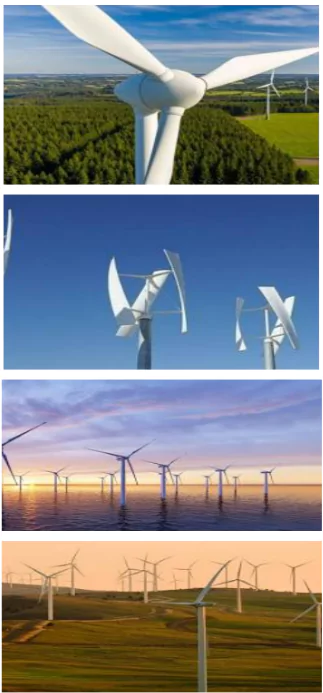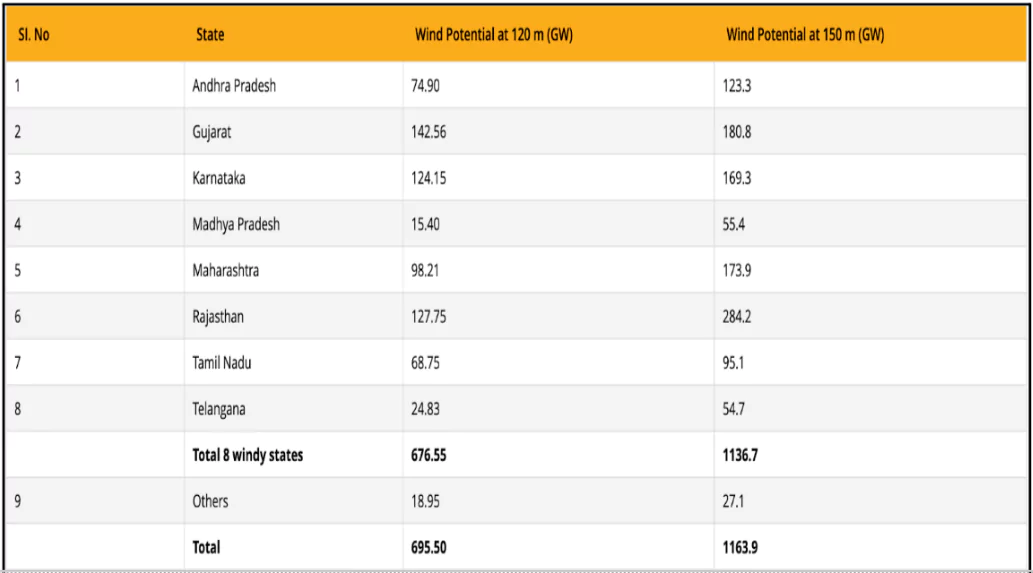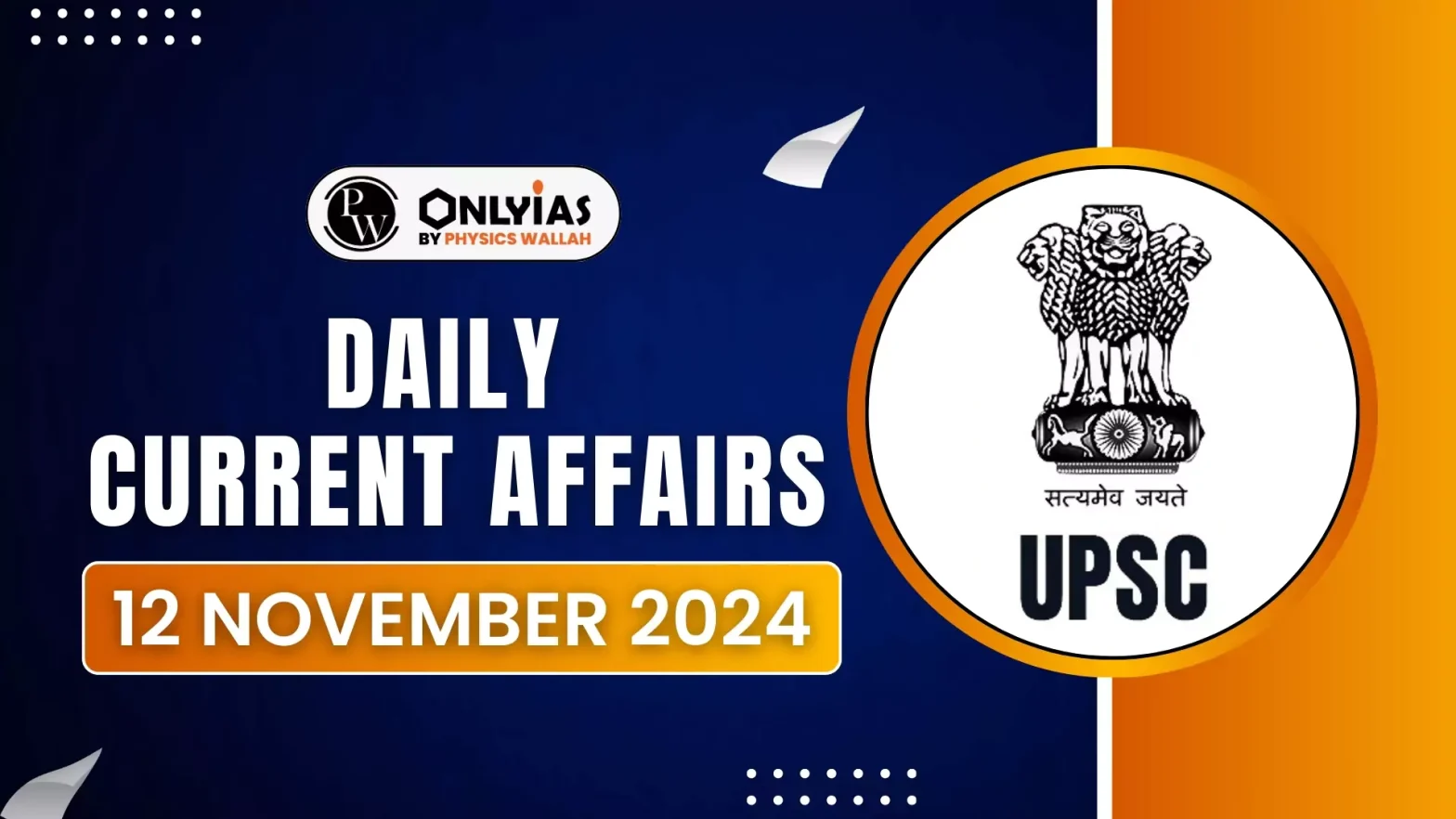In August 2024, the Tamil Nadu government introduced the “Tamil Nadu Repowering, Refurbishment and Life Extension Policy for Wind Power Projects – 2024” to address ageing wind turbines.
Wind Policy Challenged as Tamil Nadu Loses Top Spot in Capacity
The policy has faced opposition from wind energy generators, who argue it does not sufficiently promote wind energy generation.
- Wind energy generators took the matter to the Madras High Court, which has issued a stay on the policy.
- Generators are demanding a policy revision that better supports the growth and viability of wind energy.
- Earlier this year, Gujarat surpassed Tamil Nadu in installed wind power capacity, making Tamil Nadu the second-leading state, after holding the top position for many years.
Enroll now for UPSC Online Classes
About Wind Energy

- Wind energy is a renewable energy source that harnesses the power of the wind to generate electricity.
- It’s a clean and sustainable way to meet our energy needs.
Types of Wind Energy Plants
- Horizontal Axis Wind Turbines (HAWTs): These are the most common type, with blades that rotate around a horizontal axis. They are highly efficient and can generate large amounts of electricity.
- Vertical Axis Wind Turbines (VAWTs): These turbines have blades that rotate around a vertical axis. They can capture wind from any direction and are often used in urban areas.
- Offshore Wind Farms: These wind farms are located in bodies of water, such as oceans and large lakes. They can generate more electricity than onshore wind farms due to stronger and more consistent winds.
- Onshore Wind Farms: These wind farms are located on land, often in rural areas with high wind speeds. They are a more established technology and are widely used around the world.
India’s Wind Energy Potential
- Global Ranking: India ranks 4th globally in installed wind energy capacity, following China, the United States, and Germany.
 Wind power accounts for nearly 10% of India’s total installed utility power generation capacity and generated 71.814 TWh in the fiscal year 2022–23, which is nearly 4.43% of total electricity generation.
Wind power accounts for nearly 10% of India’s total installed utility power generation capacity and generated 71.814 TWh in the fiscal year 2022–23, which is nearly 4.43% of total electricity generation.- Wind Power Potential: India has a wind power potential of 1,163.86 GW at a height of 150 metres above ground level.
- Top States by Wind Power Potential (at 150m):
- Rajasthan: 284.25 GW
- Gujarat: 180.79 GW
- Maharashtra: 173.86 GW
- Karnataka: 169.25 GW
- Andhra Pradesh: 123.33 GW
- Highest Installed Wind Power Capacity (as of May 2024):
- Gujarat: 11,823 MW
- Tamil Nadu (second highest)
- Karnataka: 6,312 MW
Global Offshore Wind Alliance (GOWA)
- Aim: To accelerate the growth of the offshore wind industry.
- Objective: To provide a centralised platform for the offshore wind industry, offering a comprehensive overview of global events and developments.
- Target: To contribute to the installation of at least 380 GW of offshore wind capacity by 2030.
- Long-Term Goal: To support the global transition to clean energy by helping the offshore wind industry reach a capacity of over 2000 GW by 2050.
|
Check Out UPSC NCERT Textbooks From PW Store
National Offshore Wind Energy Policy – 2015
- Aim: To provide a legal framework for development of the offshore wind sector in India.
- Development Scope: The policy allows for offshore wind energy projects up to 200 nautical miles from India’s baseline, covering the country’s Exclusive Economic Zone (EEZ).
- Nodal Ministry and Agency: The Ministry of New & Renewable Energy (MNRE) serves as the primary ministry, with the National Institute of Wind Energy (NIWE) designated as the lead agency for offshore wind energy development.
- Long-Term Capacity Target: The policy sets a goal to reach 30 GW of offshore wind power capacity by 2030, supporting India’s renewable energy ambitions.
- Renewable Purchase Obligation (RPO) Trajectory: A roadmap has been declared for the Wind Renewable Purchase Obligation (RPO), establishing targets through the year 2030 to enhance offshore wind energy adoption.
Global Wind Energy Council (GWEC)
- GWEC is a global platform for the wind energy industry, providing research, market intelligence, and policy advocacy with headquarters at Brussels, Belgium.
- Mission: To promote the development and deployment of wind energy as a sustainable and cost-effective energy source.
- Membership: Represents over 1,500 companies and organisations from 80+ countries.
Includes manufacturers, developers, suppliers, research institutions, and financial institutions.
- Key Activities of GWEC:
- Research and Analysis: Publishes the Global Wind Report and other industry insights.
- Policy Advocacy: Advocates for policies that support the growth of wind energy.
- Industry Networking: Organises events and conferences to connect industry stakeholders.
Rejuvenation of Wind Turbines
- Repowering: Replacing old turbines (especially those under 2 MW) with newer, more efficient ones. This can increase capacity by using larger turbines with higher power output.
- Repowering small turbines could boost Tamil Nadu’s wind energy output during peak windy seasons by up to 25%.
- Refurbishment: Includes modifying the height, blades, or gearbox of existing turbines to improve performance.
- Life Extension: Involves maintaining and upgrading old turbines to extend operational life.
Challenges in Wind Energy Repowering in India
- Aging Infrastructure and Low-Capacity Turbines: Many wind turbines in India, such as those in Tamil Nadu, were installed before 2000 and have capacities below 1 MW.
- These older turbines are inefficient and require upgrades to align with modern, high-capacity models.
- Land Constraints: Repowering with newer, larger turbines (2 MW+) requires additional land.Limited land availability restricts the placement of advanced turbines, limiting capacity expansion.
- Banking Restrictions:Lack of financial backing for wind turbines is also a limiting factor for repowering of Wind Turbines.
- Post-2018 installations in Tamil Nadu lack banking facilities, affecting the financial viability of repowering, as repowered turbines are ineligible for banking benefits.
- Transmission Limitations: Outdated transmission systems cannot handle the increased output from modern turbines, causing potential bottlenecks.
- Lack of Incentives: Insufficient policy incentives reduce developer interest in repowering, as costs and complexities deter investment in existing wind farms.
Enroll now for UPSC Online Classes
Way Forward
- Policy Incentives: Introduce financial incentives for repowering projects, such as tax benefits, grants, or subsidies, to improve project viability.
- Banking Facility Extension: Allow energy banking for repowered turbines to ensure financial stability for wind energy generators.
- Land Use Flexibility: Streamline land allocation and consider shared or additional land for high-capacity turbine installations where feasible.
- Infrastructure Upgrades: Invest in transmission and evacuation infrastructure to handle increased energy output from new turbines.
- Streamlined Approvals: Simplify approval processes for repowering and refurbishment to accelerate project timelines and reduce administrative hurdles.
![]() 12 Nov 2024
12 Nov 2024


 Wind power accounts for nearly 10% of India’s total installed utility power generation capacity and generated 71.814 TWh in the fiscal year 2022–23, which is nearly 4.43% of total electricity generation.
Wind power accounts for nearly 10% of India’s total installed utility power generation capacity and generated 71.814 TWh in the fiscal year 2022–23, which is nearly 4.43% of total electricity generation.